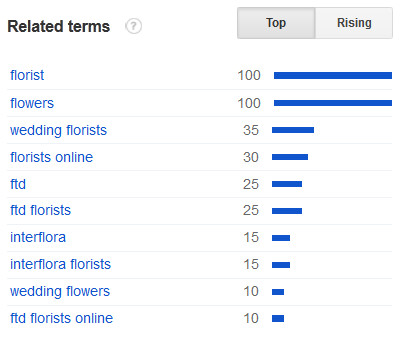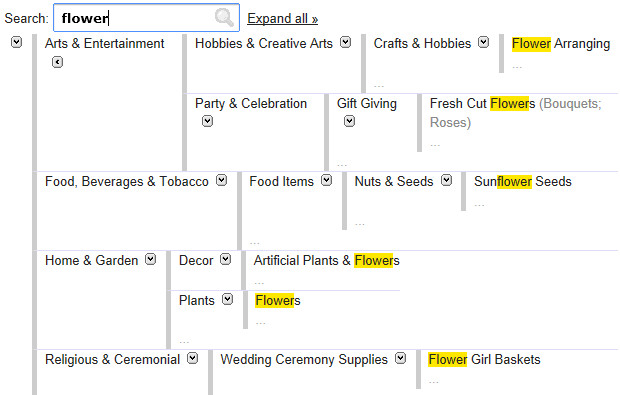Editor’s Note: This article was originally published by Web Marketing Today. Practical Ecommerce acquired Web Marketing Today in 2012. In 2016, we merged the two sites, leaving Practical Ecommerce as the successor.
Many search marketers are intimidated by the keyword research phase of search engine optimization. They falsely assume that it requires purchasing expensive subscriptions to tools, or hiring experts. However, Google provides a wealth of data that you can leverage if you know where to look. Read on for five fantastic sources of keyword ideas in Google itself.
There are compelling reasons to stick with Google’s various tools and keyword association indicators instead of paying for third-party tools, anyway. Third-party keyword tools often rely upon data from smaller search engines. These secondary data sources may not be as representative of average searcher behavior. They can be biased towards their own, smaller demographics. Keyword usage statistics may be generally represented by these tools, but I’ve seen numerous cases where they skew towards recommending phrases that are not as popular as what Google’s data indicates.
So, if you stick with Google’s various keyword tools, you may have an advantage over those using the third-party keyword tools. You’ll likely select keyword phrases that target more of the people seeking your business services or products.
Here are five keyword research sources in Google.
1. Google Trends
Formerly two tools — Google Trends and Google Insights — this allows you to type in a few different keyword phrases to see which is more popular, and whether the numbers of searches are growing, shrinking, or remaining the same. To make it even more powerful, you can refine the results by geography to see what phrases are more popular for specific regions or cities.
For example, a Google Trends chart comparing “florists”, “flower stores”, “flower shops”, and “flower delivery” clearly shows that “florists” is the most popular term, as shown below.

The term “florists” is most popular in this example.
However, if you were researching for a florist located in South Dakota, you’d come to a different conclusion. In that region you’d be better off using “flower shops” as the most popular phrase for this type of business, since that phrase has a slight edge over “florists.”

When restricted to searches from South Dakota, “flower shops” is most popular.
I consider this the most powerful tool to determine what keyword phrase to feature for a site’s home page. Check your assumptions about what is the most-popular keyword phrase associated with your business by using Google Trends.
Another section of the Google Trends report shows “Related terms” associated with the keywords you’ve compared. This is a very powerful feature since it may reveal phrases you have not have otherwise considered. The “Related terms” shows keywords that were frequently also searched by those who searched for the keywords you are comparing. Since search engine users frequently self-correct and explore similar terms to find what they’re seeking, this data can help you ensure you have the best primary phrase for your site. It can also provide you with additional phrases to target in your site’s ancillary content and blog posts.

Terms related to “florist”.
Some search marketers prefer using the Google AdWords Keyword Tool, which functions very similarly to Google Trends. Data from both tools correlates closely in many cases. But it’s important to know that the AdWords Keyword Tool was originally intended for use in planning pay-per-click advertising, and it can potentially be influenced by ad revenue and search term seasonality. For SEO — crafting web pages to perform well in search results — I prefer Google Trends and not the AdWords Keyword Tool.
2. Google Autocomplete
Google Autocomplete suggests popular search phrases related to the keywords you are typing into the search forms on the site or in Google Toolbar.

Autocomplete suggestions on Google’s search bar.
Exploring variations of the different search terms associated with your business can help to further reinforce which phrase is the most popular. The more popular phrases are displayed first, at the top of the list in the Autocomplete set. It can reveal other closely related search terms.
I’ve found that the native search toolbar in Firefox provides more suggested keyword terms than Autocomplete does directly on Google’s site. To get a longer list of phrases, use this toolbar feature.

Autocomplete suggestions in a Firefox toolbar.
These phrases can change over time as they are influenced by popularity fluctuations and click-through rates associated with them. So, it’s a good idea to observe and record the terms associated with your popular keywords periodically to see if some new phrase appeared that you could target on your site.
3. Related Search Terms
When conducting a search, Google frequently displays a handful of related search terms below the search results listings.

Related search terms in Google.
While these can have a high degree of similarity with the Related Terms in Google Trends and the terms in Autocomplete they are still unique in most cases. They will provide another rich source of phrases you may want to consider targeting with content on your site.
Related searches can also be unique for Image Search. So if your site’s products or services are closely related to visual subject matter, it is good to check the related searches under the “Images” search tab in Google as well.

Related image search terms.
Related searches are also displayed now in some cases for Local Search results in Google, as shown below.

Related local search terms.
In Local, these terms can sometimes indicate other business categories to associate with your Google Places listing or local neighborhoods that you might want to target in your site materials.
4. Google Sets
Another rich source of related terms can be found via the “Google Sets” functionality within Google Spreadsheets — in Google Docs / Google Drive. Google Sets is a Google Labs experiment that was decommissioned, but not before the integral functionality was transferred into their Spreadsheets service. To invoke it, simply type in a few keyword terms into cells in one column — say, three to five terms — select those cells, and then hold down the CTRL key while dragging the corner handle of the selected area down around 10 rows further.

Google Sets functionality on a Google Docs spreadsheet.
Google Sets then will automatically fill in the remaining cells by continuing the set of terms according to Google’s data. The terms that extend out and continue the set are phrases that Google deems to be semantically related, sort of like an automatically generated thesaurus. When performing research, experiment with a number of different collections of keywords related to your business, to explore what other phrases Google may consider to be thematically related. You may discover quite a number of keyword terms that could inform your content creation over time, resulting in a website which “sings” a very coordinated “song” to search engines about the concepts for which your site and company are all about.
5. Google Product Taxonomy
You can search and browse the Google Product Taxonomy, which is used as part of the mechanisms in Google Shopping for categorizing products. This feature is only really useful for businesses that sell products — it will not help service-oriented businesses. When you submit a keyword, it will spit out a dynamic, hierarchical chart showing other categories related to the keyword. By clicking to expand out different parts of this categorization chart, you can find yet more terms that Google uses to classify your type of product or other closely related classifications.

Google product taxonomy is yet another tool for discovering more words and phrases that may help you build out the content of your site.
Summary
By using these five keyword research tools within Google itself, you will mine the richest source of data available. You’re letting the search engine tell you the very best words and phrases to use on your site. While I haven’t gone into all the details of how to effectively implement the keywords you discover, just understanding how to establish the words and phrases you should be using in optimizing your website is probably the most basic, foundational step in becoming an SEO ninja. Even if you think you know all phrases and popular trends associated with your business’s keywords, exploring the possibilities through these tools can often help you discover even more phrases to target, giving you an advantage over your less-sophisticated competitors.


